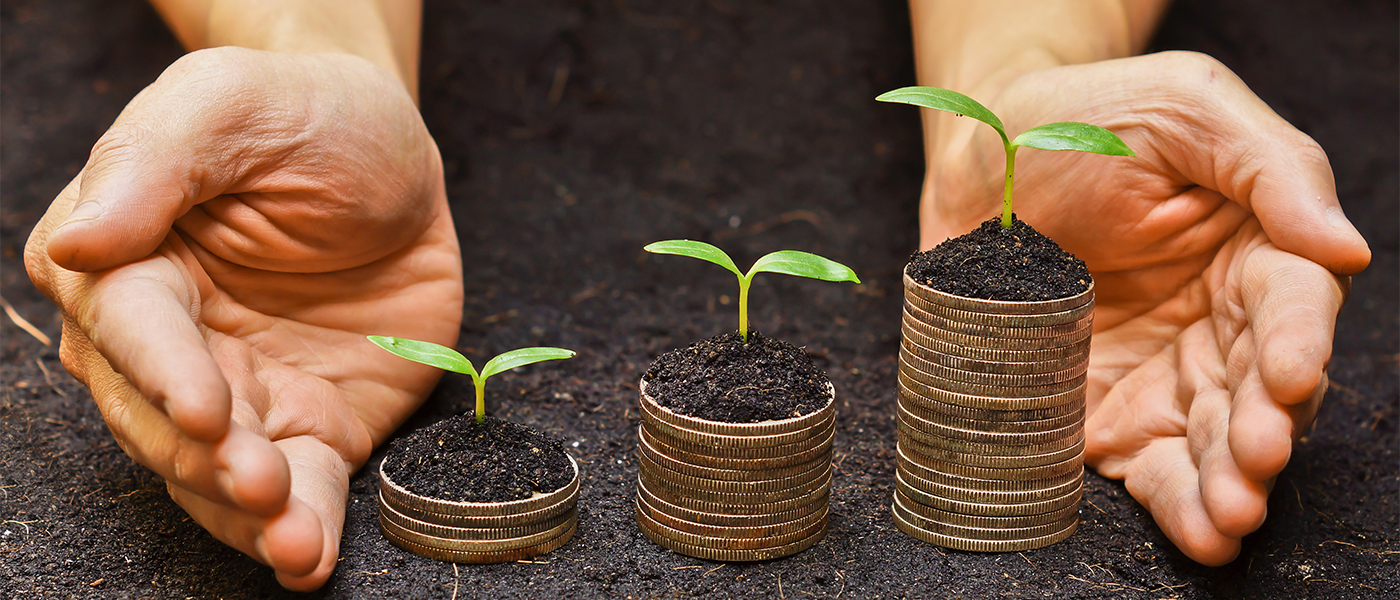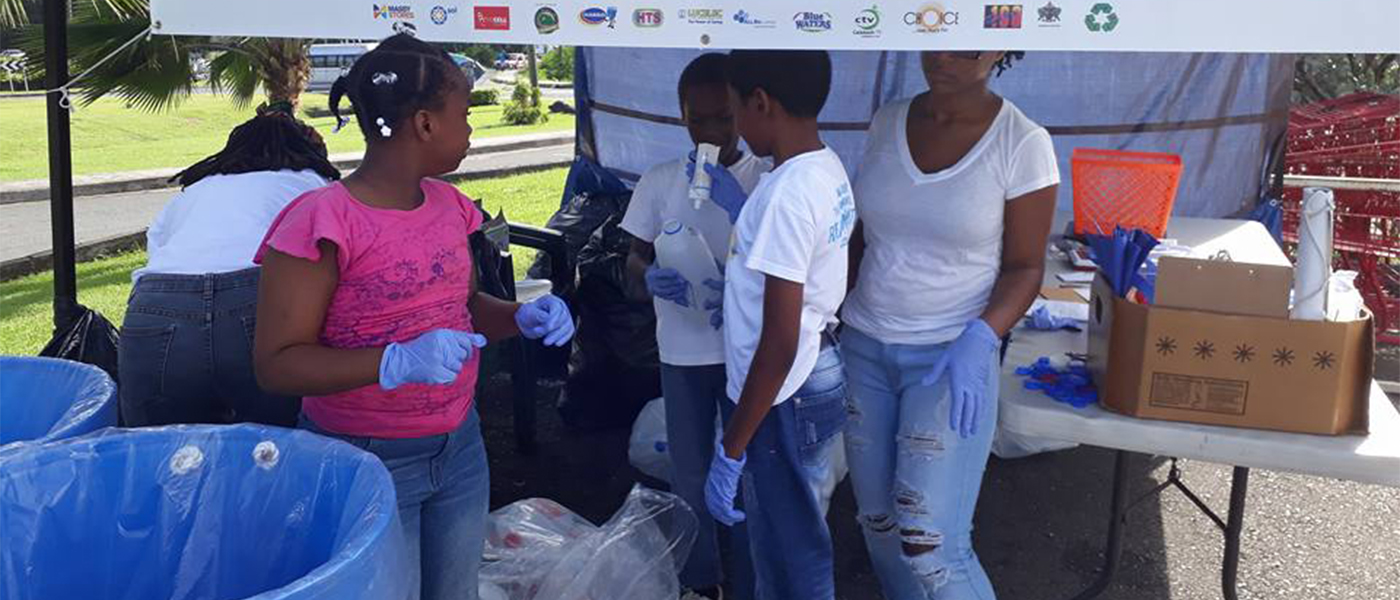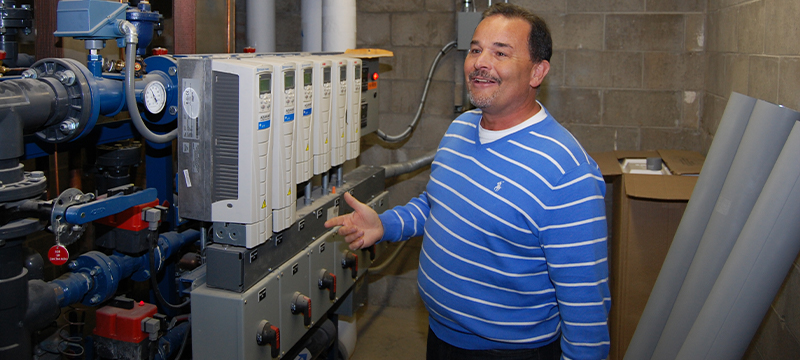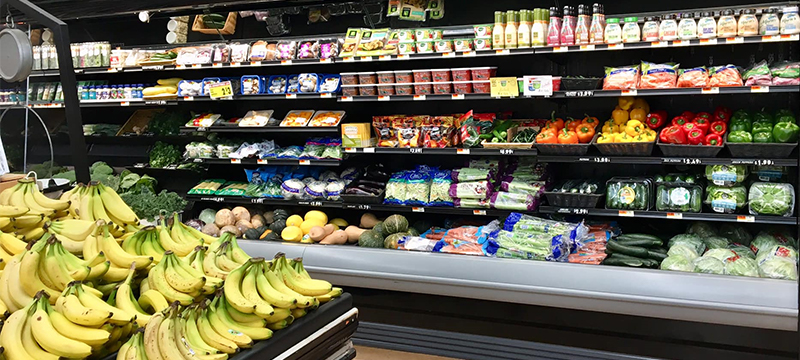Help Isom IGA recover from devasting floods

You know that going green is the “right” thing to do, but when it comes to store operations, implementing energy-saving projects can help you save green, as well as benefit the planet and your community. Some food for thought:
- What’s your carbon footprint? According to EnergyStar.gov, U.S. grocery stores use an average of 50 kilowatt-hours (kWh) of electricity a year. For an average-size (50,000 square foot) store, this results in 1,900 tons of carbon dioxide being released into the atmosphere—equivalent to the emissions from 360 vehicles in one year!
- What are your store’s energy hogs? Refrigeration and lighting account for 50-65 percent of total energy use in the average supermarket, making these systems the best places to start looking for energy efficiency opportunities.
- Energy waste adds up. On average, walk-in cooler doors are left unnecessarily open for about 4.5 hours a day, which translates into $4,100 of wasted energy per door per year! Learn about this and other energy saving tips in this archived course through the IGA Coca-Cola Institute: Top 5 Grocery Store Energy Savers.
- Savings add up, too. Especially since the profit margins of supermarkets are so thin, Energy Star estimates that one dollar in energy savings is equivalent to increasing sales by $59!
While there are countless examples of IGA retailers’ work in this area, we picked four cases to show how changes—big and small—are leading to big impacts for the planet, their communities, and their bottom lines.
Island Nation Innovation
Suppose you’re based on an island community and your two landfills are nearly full. “Consumer goods are a contributor to landfills, and plastics in our ocean are a big problem and they have nowhere to go. What do you do? You become part of the solution rather than part of the problem. That’s innovative thinking,” said IGA CEO John Ross, speaking in February at the IGA Global Rally.
Ross was referring to IGA stores in St. Lucia, which were recognized at the Rally for two of their many sustainability initiatives, earning a Best Practice Award and Innovation Award. The former was for internal improvements for store operations, including upgrading lights to LED, and updated heating and cooling systems. The latter was for their work in the community at large, working to reduce the waste stream.
Concerned about the landfills on the island nearing max capacity, parent company Massy Stores teamed up with a local waste recovery company to divert recyclable materials from the waste stream. For nine weeks last fall, pop-up depots were set up outside at various Massy stores to facilitate the drop off of unwanted plastic and glass containers by the public.
The takeaways: This recycling pilot project resulted in 5.3 metric tons of waste being saved from landfills. The energy efficiency updates resulted in a five percent reduction in energy usage group-wide, saving $260,000 in 2016, with more projects planned this year.
Learn more: Find out ways to cut back on waste as well as energy saving tips in two courses offered through the IGA Coca-Cola Institute.
Energy from the Earth

About 10 years ago, Brooks Marsh, owner of Mahomet IGA in Mahomet, Illinois, decided to roll renewable energy into an overall store renovation project.
“A grocery store uses more energy per square foot than any other retail business,” he said. Working with an engineer and consultants from University of Illinois’ Smart Energy Design Assistance Center (SEDAC), they designed and implemented a geothermal heating and cooling system. Rather than drawing heat directly from the earth, the heat pump uses groundwater beneath the store for heating and cooling. In addition, the system taps groundwater to cool compressors used for the store’s refrigeration units.
The store received the Governor’s Sustainability Award in 2011, and other stores have implemented similar systems based on Mahomet’s plans, Marsh said.
The takeaway: Partially funded through grants and incentives, the system paid for itself after 5.5 years, and is generating a significant amount of savings on electric costs each month. “It takes a big commitment to do something like that, but it pays off,” said Marsh.
Learn more: Read more about Mahomet’s project here, and check with your state and local government to see what incentives are available for small business energy efficiency planning. Find energy saving tips for your store here.
Going Green, Making Green
McKim's IGA in Mount Vernon, Indiana has figured out a way to reduce the store’s waste stream and give back to the community at the same time.
According to store manager Larry Williams, for years McKim's has donated all of its recyclable cardboard, plastic, and unsold newspapers to the Posey County Solid Waste District for recycling. Their county partners come get the materials, sell them, and keep the proceeds.
In 2018, cardboard alone totaled 51.5 tons, which was an increase of almost 11 tons over the year before. This donation of cardboard brought in $3,742.33 to the county coffers in 2018. The dollar amount was down due to a substantial drop in the cardboard market in June, which lasted most of the remainder of the year, said Williams.
“That total was down but still a lot of money. They won’t let me put that toward my tax bills,” he joked.
As part of the efforts to be more green, Williams also installed a barrel in the front of the store for customers to drop off plastic bags. “It’s turned into a pretty good thing,” he said.
The takeaway: On average, the store donates $3,000-$5,000 worth of cardboard and other recyclables, which has saved money they would have to pay for trash removal as well.
Learn more: Check out GSC’s Top 10 Waste Training Tips course from IGA Coca-Cola Institute to learn how recycling cardboard can save nearly $10,000 a year for your store and divert waste from landfills.
Taking on the ‘Energy Hogs’

While doing energy efficiency updates might take some time, effort, and expenditure up front, sometimes the pay off can be immediate. Such was the case for Brackett’s Market in Bath, Maine. A year ago store owners Kim and Steve Brackett replaced all the lighting in the store with energy efficient bulbs and noticed the difference in both the quality of lighting and in their monthly bill, saving almost 15 percent a month. Add to that a rebate through Efficiency Maine and the work quickly paid for itself.
This year, Brackett’s took on what are typically seen as “energy hogs” in a grocery store: coolers and freezers.
“What we had was old, going on 20 years or more,” said Kim Brackett. So over the winter, they replaced them with more energy efficient models across all departments.
One of the immediate benefits was more space, she said. “With newer cases, the way they are configured, there is more space available. We were able to fit 75 new items into produce and 100 new products in frozen, which are great new offerings for customers and helps generate more income to pay for the upgrades,” she said. They’ve used their Facebook account to help promote the new cases and light-up freezers and so far the feedback has been positive.
On a city-wide level, another change that’s impacted the store and customers is a ban on single-use plastic bags and styrofoam take-out containers, which went into effect last Earth Day. While they now use paper cups and biodegradable take-out containers, the store ended up getting an exemption for the meat department, as there aren’t many alternatives to packaging for meat. Plastic produce bags are still available for customers as well.
“Food safety is priority. The city was flexible for that,” said Brackett.
As far as the bags go, under city mandate Brackett’s has to charge a nickel for every paper bag, which was the toughest part about the change. “At first people were angry about the charge, and we had to re-educate customers, but now they are getting used to it,” she said.
The takeaways: Start with your local utility, energy efficiency nonprofit, or state agency, as there may be some incentives you can take advantage of when doing these types of updates.
Learn more: The Energy Star website has a section specifically for grocery retailers, and is a great place to start researching energy efficiency projects and which ones can have the biggest payback. Looking for ideas to put a positive spin on bag fees? Check out this best practice from Harvest Market IGA.
Previous Story
← What’s Right for the Planet is Right for Business
No Comments Yet
Let us know what you think